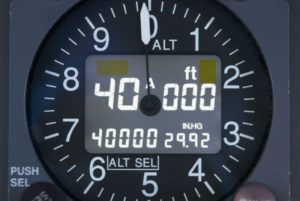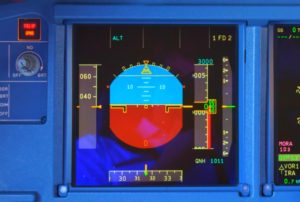How high should a plane fly? Captain Lim Khoy Hing explains optimum cruising altitudes.

Image: Travel 3Sixty
All planes generally have a preferred cruising altitude, and frequent flyers will notice this when their captain makes an inflight announcement, or when this information is displayed on the video screens.
The cruising level is normally chosen for economical reasons, as a higher altitude is favoured because the thinner air allows a plane to cruise more easily and thereby, burn less fuel. This is dependent on the weight of the aircraft – the lighter the plane, the higher it can go. Therefore, an aircraft may start cruising at 33,000ft and eventually end up at 41,000ft closer to its destination when more fuel has been consumed.
Optimum Level
The most economical altitude is known as the optimum flight level. For instance, if the optimum flight level to Hong Kong from Kuala Lumpur, Malaysia, is 35,000ft, all the planes departing would request for this level. Although the air traffic controller endeavours to meet this request from the pilot, it is not always possible, and the pilot may be provided with a different flight level instead.
If the pilot is given 2,000ft above the optimum flight level, the plane would burn 2.5 per cent more fuel, whereas 4,000ft below optimum flight level would cause the plane to consume 5 per cent more fuel. Even worse, 8,000ft below the economical altitude translates to 10 per cent more fuel burn! If the pilot rejects the level he is given, the plane will lose its place in the queue waiting for take-off , causing a delay. Now you can understand what your captain means when he or she says, “Ladies and gentlemen, we apologise for the delay in our departure due to air traffic control constraints.”

Image: Travel 3Sixty
Steady Under Pressure
The altimeter is a gauge that measures air pressure to determine how high a plane is flying at any given time. A basic altimeter is shaped like a clock face with a dial on one end, and contains a capsule known as an aneroid that expands and contracts according to the varying air pressure. As a plane climbs, the air becomes less dense causing the capsule to expand, and the opposite happens during descent. The movement of the aneroid is transferred to the ‘clock hands’, indicating the plane’s altitude.

Image: Travel 3Sixty
Rules of the Game
There are rules and regulations in place to prevent planes that are travelling towards each other from colliding. These rules are enforced by air traffic controllers. If you take our earlier example of a flight between Hong Kong and Kuala Lumpur, which is given a cruising level of 35,000ft, a plane travelling in the opposite direction will be allocated 36,000ft with a 1,000ft separation to ensure a safe distance between aircraft.
Control Factor
On an Airbus aircraft, the pilot controls the altitude by using the side stick. If the pilot wants to decrease the altitude, he pushes the side stick forward to dip the nose of the plane. The opposite happens in a climb – the pilot pulls the side stick back to lift the nose. When the pilot wants to hold a steady altitude, the side stick is held in a neutral position. This manipulation is tiring on a long flight, and that’s where the autopilot comes in to help the pilot maintain a constant altitude.
Cruising Along
A jetliner typically cruises between 30,000 and 40,000ft, allowing it to avoid much of the bad weather conditions, whereas a propeller-driven plane flies around 15,000 to 20,000ft. These aircraft usually encounter turbulent and cloudy weather while descending to lower altitudes as they near their destination.
Light aircraft, on the other hand, are not pressurised and therefore fly below 10,000ft. If they fly any higher than that, pilots in unpressurised planes are required to wear oxygen masks to prevent hypoxia (deprivation of adequate oxygen) from affecting their performance.

Image: Travel 3Sixty
Highs & Lows
Every plane has a maximum height, or service ceiling as it is called in aviation, which is a designated altitude above which the pilot must not fly for performance reasons. The service calling is 41,450ft for the Airbus A330, and 43,100ft for the Boeing 777.
According to the Federal Aviation Administration (FAA), it is illegal to fly below 1,000ft when the aircraft is over built-up areas, or lower than 500ft when over any person, vehicle or structure, except during takeoff and landing. This is to avoid negative environmental effects caused by loud noise, as well as in consideration of safety issues.
Keeping in Tune
I hope that with this month’s article, you are more in tune with flight delays, and your environment as your plane soars into the skies.
As you can see, there is much that goes on behind the scenes to ensure that your flight is a smooth and safe one.
With that, I wish you an enjoyable and safe flight.
Posted: 08.01.18